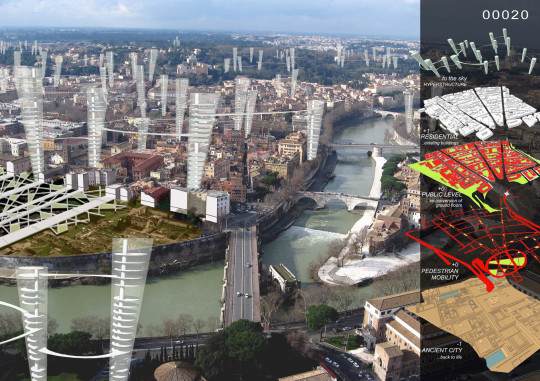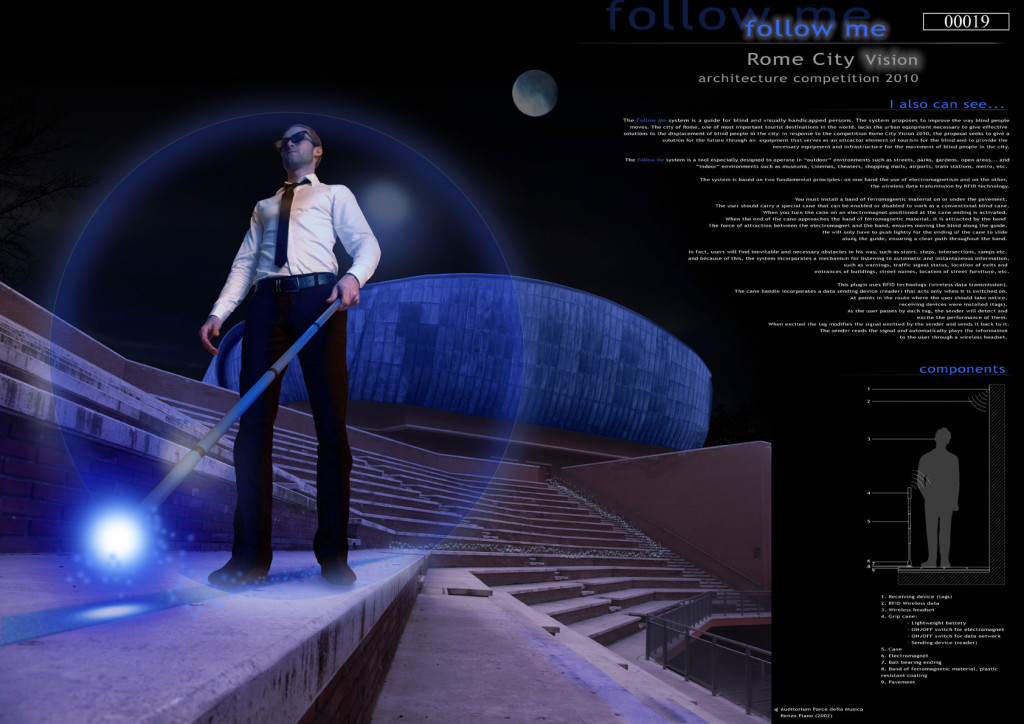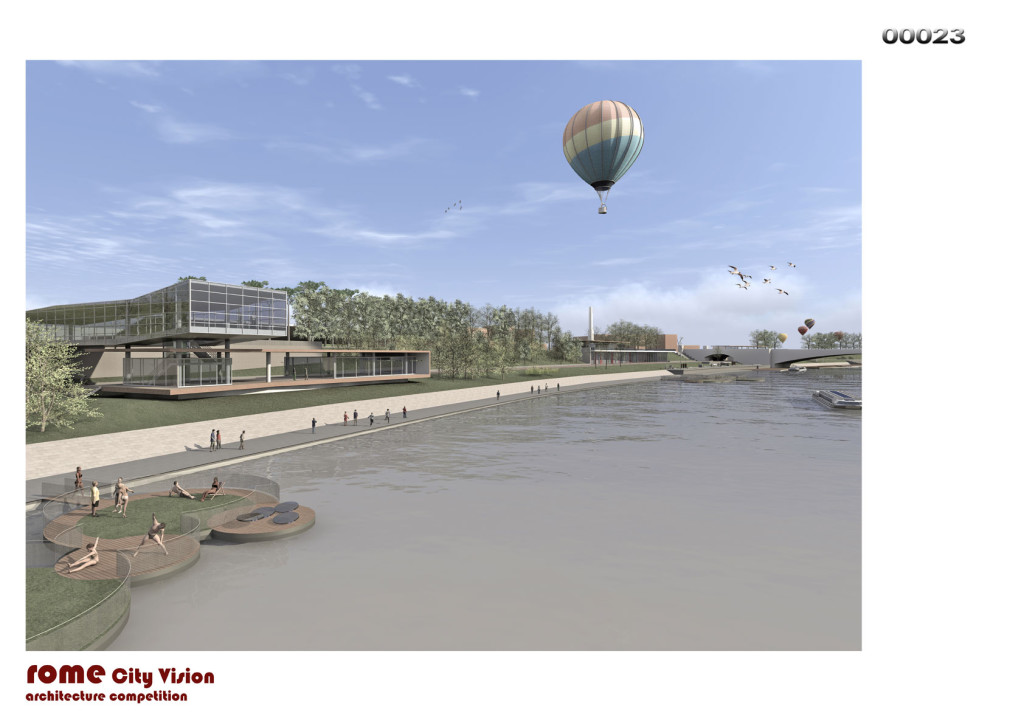Info:
Title: Rome - Code: 00020Contest: Rome / 2010
By: I. de Landerset / E. Holsztejn Tarczewski
Views: 2929 Likes: 1
Votes:
JUERGEN MAYER H. 0 FRANCESCO LIPARI4 FELIPE ESCUDERO4 FRANCESCO GATTI 5 MICHAEL CATON 63.8
Rome


Society should be conceived as a complex organism, made of several related structures, so as human body: economical elements, political and social questions, technical and aesthetical factors, does not have any meaning if considered separately. Indeed they constitute, all together, a culture, that is the way a society makes itself unique and recognizable.
So as human body grows up and changes during the period of a life, the organism-society develops and modifies itself in a continuous process, where every factor is influenced by the other ones. The equilibrium of a society is given by the good balance among its material and immaterial components.
Architecture can be conceived as the main materialization of a culture and it can not be extrapolated by its social background. Architecture gains value when it is coherent with life and can efficiently express its society. Architecture and life belong to each other. If the first one does not follow the second one, we have a fracture.
Architecture is usually considered as “art of the space”; however it is also strictly related to the concept of time, so that a city can be considered as concretion of the time that becomes history.
Cities have been changing with time; therefore their layouts reveal the past, the present and the future of their collectivities. The contemporaryRomeand the ancient one apparently seem to be two different cities, without any relations; however, they can be understood and synthesized in a unique and specified life process. The stratification of many different experiences causes the succeeding modifications of the city and of its architecture.
Although the ancient Rome is apparently a dead substrate, it continues to influence the contemporary city; it should not be merely considered as a collection of old ruins: if it is clear that the Forum has lost the civic function it used to express many centuries ago, it is also real the it can actually gains new meanings and express new values in accord to modern life. So, the ancient city should, in one hand, be considered as the necessary background for every succeeding development; on the other hand, it should be unearthed, revaluated, and enriched with new meanings.
And what about the city of the future? The new architecture should put down roots in the new century and look for symbols that can reflect the sensitivity of the current society. This can not be achieved either building modern architectures that are unable to capture the spirit of our society, nor re-building ancient destroyed constructions, forgetting our modern identity.
“Our time is our present consciousness”. We should totally reconsider the idea of city, starting from contemporary culture. We should think about our needs, life style, about the concept of quality. It is not a question of style, where architects can choose a metal skin instead of a stone cladding. The object of our research is not the single building, but the whole structure of the city.
Romeis one of the most important example of city in which past, present and future coexist in the same time and in the same space, as stratification of different temporal levels.
The first aim of the project is to re-establish a connection with the historical monuments and tracks, through a new reinterpretation and upgrading of the old roman ruins. The idea is to generate a new strong relation between all that layers of the city that belong to different century.
The proposal is to link together the ground level and the underground one, so to create a unique public/relational space, where people can meet and enjoy their free time. In order to permit the creation of this new public space, the ground floors of all the existing buildings are relieved and absorbed by the city structure and get turned into public areas; in the same way, the old ruins are relieved of the meters of earth that nowadays cover them. Flying bridges connect the building ground floors and create a perforate and luminous grid upon the ruins.
The second aim of the project is the proposal of a urban development able to capture the spirit of our century, adding a new modern layer to the historical stratification ofRome. The idea is an architecture that, starting from the interstices of the existing city, is able to grow up independently, generating, on the top ofRome, the new stratification. The key words of the project are personalization, ecology, speed and relational space. The project does not want to propose a specific kind of settlement or housing. The idea is to create a sort of big structural and infrastructural system in which habitants can build their accommodations according to their needs and personality. We have already mentioned the double-level public system. The creation of this space is also possible thanks to a new kind of transportation, that permits to free up the ground level from traffic. “Olgagreen” is a pocket-car. It can be wrapped into a small bag and, if there is the need, just pushing a button, it becomes a big ball covering the driver and rolling along canals placed on the first level. “Olgagreen” is electric and it can also use solar energy thanks to solar panels that cover the canals.






